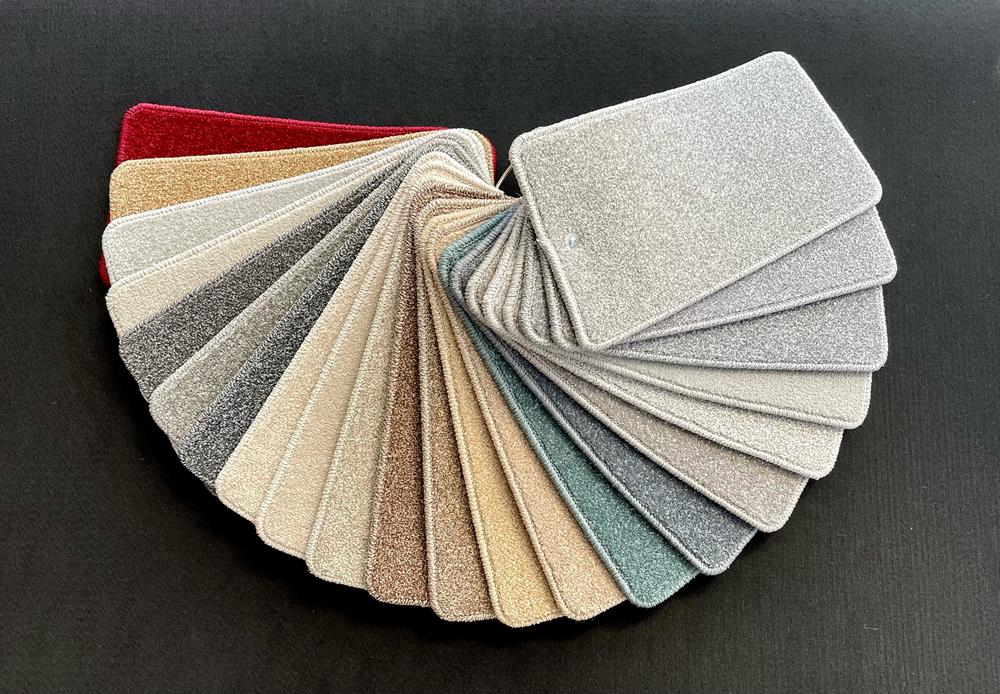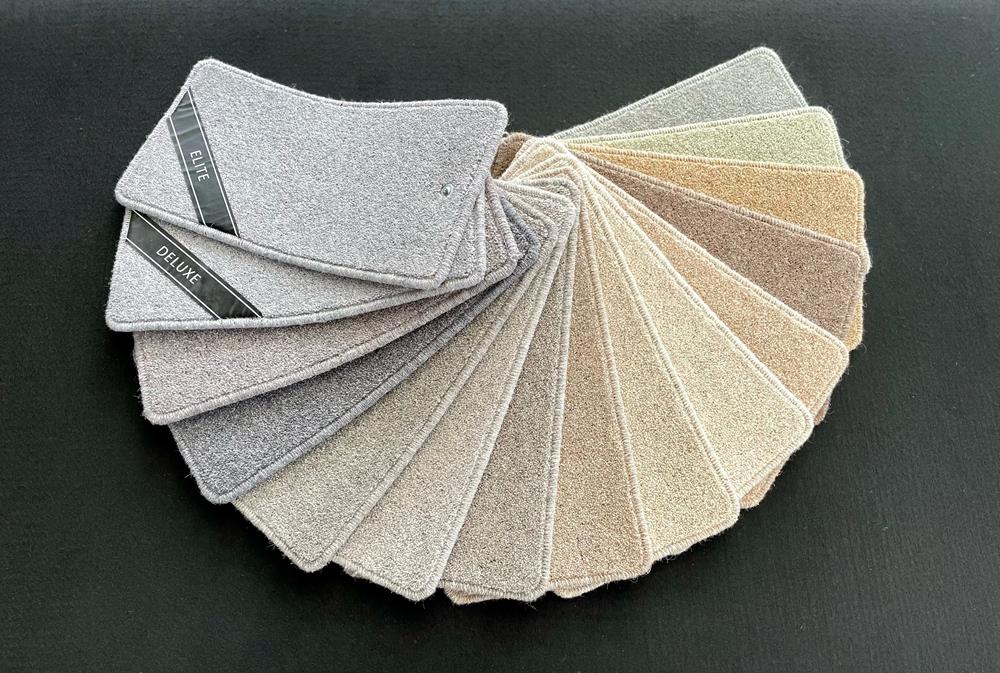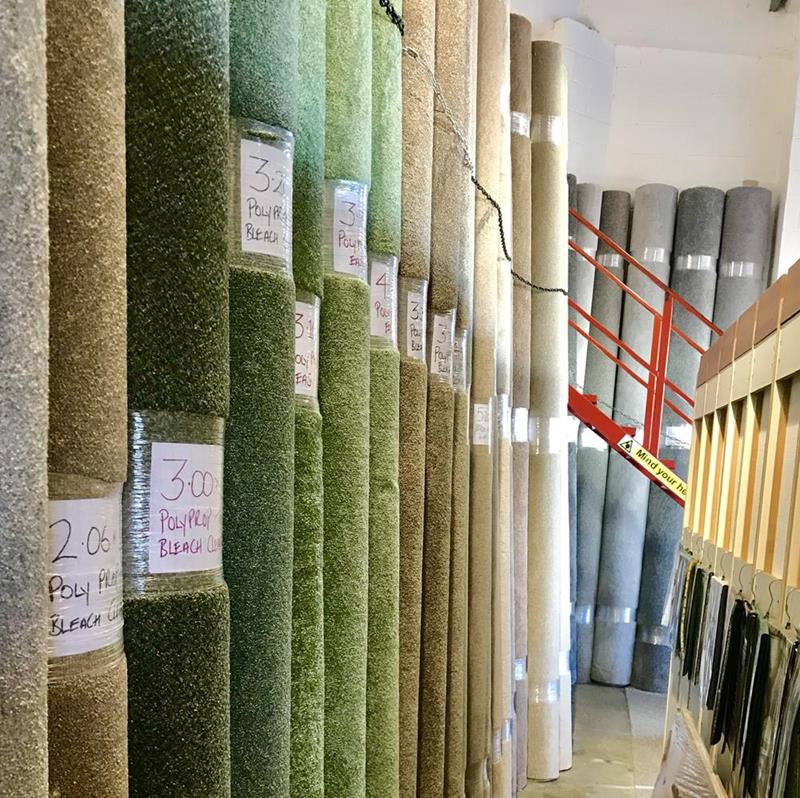With energy, fuel, food and other costs rising sharply, the cost-of-living squeeze is making headlines on a daily basis. Fitting a new carpet might seem like a luxury but if you’re keen to update your threadbare flooring without breaking the bank we have some great tips.
You might be tempted to buy the cheapest carpet you can find, but that can be a false economy and a poor investment of your hard-earned cash. So how do you save money when buying a new carpet? We tapped into Craig Sargeant’s knowledge gained over more than 30 years to find out which carpet moneysaving ideas really work and which can possibly be a complete waste of time.
How can I save money when buying a carpet?
It’s always best initially to speak with a professional carpet supplier and fitter such as Craig Sargeant at Sargeant Carpets. Craig’s product knowledge, combined with over 30 years of trade experience, is key to this and there will always be deals and discounts available when you need a new carpet.
How can I reduce the amount of carpet I need and therefore save money?
Our first tip is to minimise waste and make sure you only buy what you need. Craig has experience of customers who have tried to do the job themselves or used a handyman and ended up with loads of materials left over, and possibly an inferior job. This is one example where you can waste a lot of time and money by trying to cut corners.
If you can provide the room sizes accurately to a professional carpet fitter such as Craig Sargeant then he will be able to calculate how much carpet will be needed with the least amount of waste.
How can I prepare a room to save money when I need a new carpet?
Preparing the room for a new carpet yourself is one way of saving money, because the less work that a professional carpet fitter needs to do, the cheaper the job will be.
Here are the steps you need to take to get a room ready:
- Clear out all furniture from the room.
- Remove the old carpet and underlay.
- Remove all the old fixing staples if you have a wooden floor, or scrape off any old remnants of stuck carpet or underlay.
- Cut up and dispose of the old carpet and underlay, which you can take to your local household recycling centre.
- Leave all the existing grippers where they are as they can be reused.
- Leave the existing door bars and thresholds down to be reused.
- Ensure there is a big enough gap beneath each opening door to accommodate the new carpet and underlay. If there isn’t then remove the doors as they can be cut and refitted at a later date.
- Remove any redundant cables or pipes that are at floor level.
- Fix down any loose floor boards and/or repair broken ones and fill any holes in concrete floors at least 24 hours prior to the installation starting.
- Make sure all the areas are clear, hoovered and ready for your professional carpet fitter to start the installation.
- Provide easy access and adequate close parking at the installation address.
Should I accept more joins in the carpet to reduce the cost of the installation?
The number of joins needed for a new carpet is something that can only be decided once the areas are measured and the actual carpet is selected. Some naturally join up better than others, such as twist piles and saxony carpets.
You will find that all loop pile carpets are more difficult to join up, regardless of ability. The joins can also be more visible, especially over a long distance, as the line of the loops in the length are never straight and can wave slightly from side to side.
It is worth bearing in mind that if you choose to have more joins to cut the cost, and these joins are especially in main walkways and the pile has also been rotated, then you may find the loops and tufts will start to pull on the join and the carpet will wear prematurely. This makes it a bad solution in the long term and not very cost effective!
Which types of carpet are cheapest?
Generally speaking, carpets made with polypropylene fibre are the most competitively priced as this fibre is currently the cheapest in the carpet industry. These types of carpet are available in both twist and loop pile options, and some also come with a felt backing which can be fitted direct to the floor with no underlay.
Here are a couple of Craig’s recommendations for a competitively priced carpet, but your final choice will depend what type of carpet you’re looking for.
If you’d like a man-made fibre that is easy to clean with bleach and is fade and moth resistant, then Craig would recommend the Apollo Plus, by Cormar Carpets, which is a 30oz polypropylene twist and comes in 22 colour options.

If you’re looking for a natural wool option then maybe choose the Woodland Heather Twist which comes in two quality options, Elite 45oz and Deluxe 55oz. Both qualities are available in 4 metre and 5 metre widths and in 14 colourways.

Should I consider buying a carpet offcut, remnant or roll end – and will it reduce the cost?
Buying a carpet offcut, remnant or roll end is a great way of getting a good deal, as long as it is the right colour and size! If not, then any excess you’re purchasing is a waste of money.

Can I adapt an existing carpet from a bigger room into a smaller room to save money?
This can sometimes work out well if you are purchasing a new carpet for a room and wish to utilise the old carpet in a smaller room at the same time. Things to consider are if the old carpet is in a good enough condition and if the colour works well in the smaller room. Bear in mind that you would still need to pay the installation costs, which can be more than if a new carpet was fitted.
Can I use the old carpet as underlay with my new carpet?
Craig has lost count of the number of times he’s been asked over the past 30 years whether a customer can reuse old carpet as underlay for a new one. His answer has always been, and will always be, ABSOLUTELY NOT!
Underlay has properties which make it perfect for laying underneath the carpet, and normal carpet does not have these properties. Firstly, the installation may fail as the gripper rods can’t grip through the old carpet as well as the new. Secondly, the old carpet doesn’t provide the support that underlay does, so the new one will show wear and tear much quicker.
The new carpet will also develop bumps due to stretching as it moves on the pile of the old carpet beneath. Furthermore, any traces of dirt in the old carpet will become mouldy over time, which is extremely unpleasant and impossible to access to remedy the situation. There’s a reason that we fit underlay underneath carpets, and that’s because it does the job it’s designed for really well!
Can I use the existing underlay with a new carpet?
In certain circumstances it is absolutely possible to use the existing underlay under a new carpet. We always need to check a few things first though, before recommending this solution, as there are many ways it can be a false economy.
First, how old is the existing underlay? If it’s more than six years old then we’d strongly recommend changing it. This is because using old underlay beyond its life expectancy can reduce the life of the new carpet laid over it. Also, new carpets can prematurely wear if there is no longer any bounce left in the existing underlay.
Over time, things get spilt and accidents happen and this soaks through the carpet into the underlay and onto the floor. Any odours from these spills may still be present in the room if the existing underlay is used, even if a new carpet is fitted. If you are concerned about this then remove everything and clean and disinfect the floor 24 hours prior to the installation starting.
Your existing underlay may not offer the same high tog values, noise deadening qualities or have low VOC’s (volatile organic compounds), unlike new modern underlays we can supply with our new carpet packages.
If you have allergies, especially to dust, then Craig would strongly recommend replacing the underlay. Dust gathers over time and combined with the glue that is used to adhere the secondary action backing to the surface of the carpet, can turn to powder over time. This should all be lifted and disposed of, then the floor thoroughly hoovered twice and washed twice with a damp mop to avoid any possible allergy flare-ups.
Finally, please be aware that any possible future wear complaints may not be honoured if the existing underlay is used.
Should I use a felt-backed carpet with no separate underlay to reduce the cost?
This can be a good consideration if you want to cover the floor quickly and if you have a very tight budget. However, you should realise that felt-backed carpet will feel very hard underfoot and the pile will flatten very quickly. These types of carpet will also offer next to nothing in sound and heat insulation.
Other carpet guides
We have written a range of articles to help you choose the right flooring for your home, including:
- Choosing the best living room carpet
- A guide to stair carpets
- How to choose the best bedroom carpet
- Understanding the different carpet pile types
- The benefits of wool carpets
- Choosing an eco-friendly carpet
- A guide to pet-friendly carpets
- Common carpet problems and solutions
- What is the best hypoallergenic carpet?
Need more help?
Craig Sargeant is always on hand to advise which carpet would work best for you and you can call him on 01243 868888, send him a Whatsapp message using the handy link on our website or email him at sales@sargeantcarpets.co.uk.


